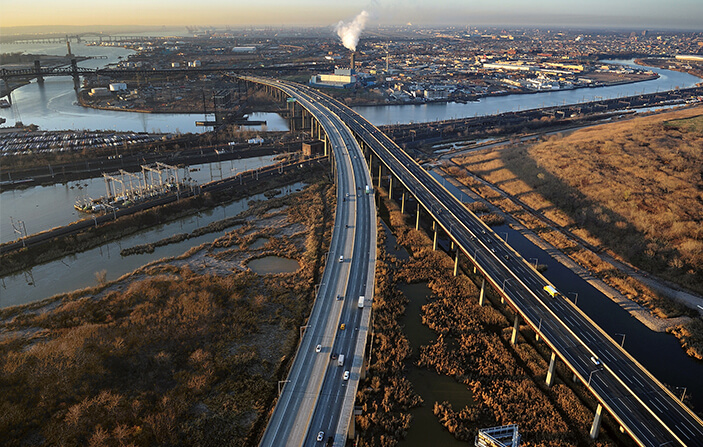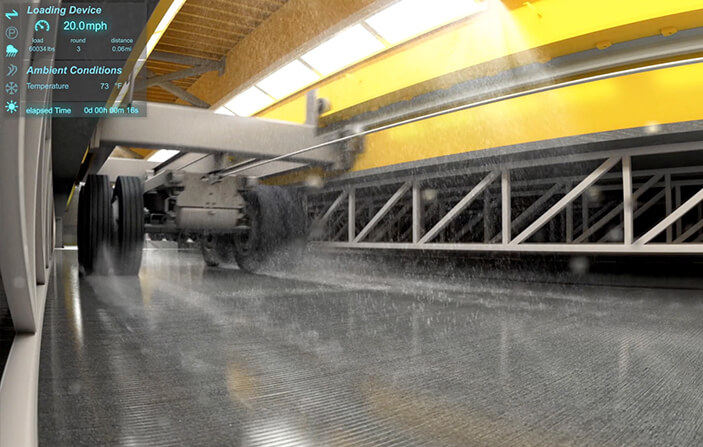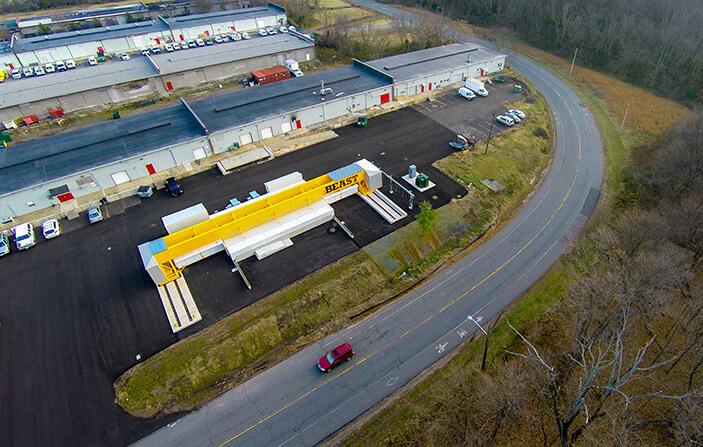The world’s first accelerated testing facility for full-scale bridge systems, the BEAST subjects bridges to extreme environmental and traffic loading to simulate decades of deterioration in months instead of years. The BEAST eats bridges, spits out quantitative data on materials and components performance, and could save billions in infrastructure costs.
CAIT’s Bridge Evaluation and Accelerated Structural Testing lab (The BEAST®) is a truly unique facility that can quantitatively measure the effects caused by intense traffic and environmental extremes on actual bridge decks and superstructures—and do so in a highly compressed time frame. It is built to induce and speed up deterioration as much as 30 times, making it possible to simulate 15 to 20 years of wear-and-tear in just a few months.
To provide empirical evidence that supports bridge owners’ decisions, engineers will be able to fast-forward, observe, and quantify the complex interrelationship of the environment and traffic with bridge designs, construction materials, and elements, and extrapolate how those things can be expected to perform decades from now.
Testing capabilities: Bridge systems, components & materials
| Concrete | Any concrete bridge deck mix design, corrosion inhibitors, supplemental cementing materials, and additives |
| Decking Systems | Open, filled, partially-filled or unfilled grid decks such as exodermic bridge deck systems; orthotropic or other metal deck systems; prefabricated deck systems; precast slabs; and others |
| Rebar | Steel, epoxy coated, galvanized, stainless steel, steel clad, glass and carbon fiber polymer, etc. |
| Prestressing & Post-tensioning Strands | Bar, wire, strands, couplers, anchorages, ducts, and other components |
| Coatings & Sealants | Latex-modified concrete, joint sealants, epoxy waterproofing seal coating, etc. |
| Superstructure Frames | Structural steel, reinforced concrete, precast concrete, prestressed concrete, and timber |
| Joints | Preformed joint filler, elastomeric joint assemblies, strip seal expansion dams, modular bridge joint systems, longitudinal joints, shear locks, and others |
| Bearings | Bearing pads, reinforced elastomeric bearing assemblies, high-load multi-rotational bearing assemblies, and others |
| Deck Drainage | Scuppers, inlets, downspouts, grates, and other drainage elements |
| Safety Devices | Striping paint, pavement reflectors, auditory safety devices (e.g., Bott’s dots, rumble strips, etc.), ITS devices and sensors, traffic cams, signage materials, and more |
- Accommodates spans up to 50 feet long by 28 feet wide
- Traffic loading: Two-axle loading cart applies 10 to 60 kips (60,000 lbs) continuous at 20mph; more than 17,500 passes per 24-hour period
- Environmental loading: Rapid cycling temperature fluctuations, 0 to 104 degrees Fahrenheit
- Application of salt brine 1% to full saturation (standard testing will use 15% soluble solution)
- 31 tons of rebar
- 540 cubic yards of concrete
- 90 tons of steel
- 6,600 feet of high voltage cable and 1,300 feet of ground wire
- More than 50 gallons of yellow paint





